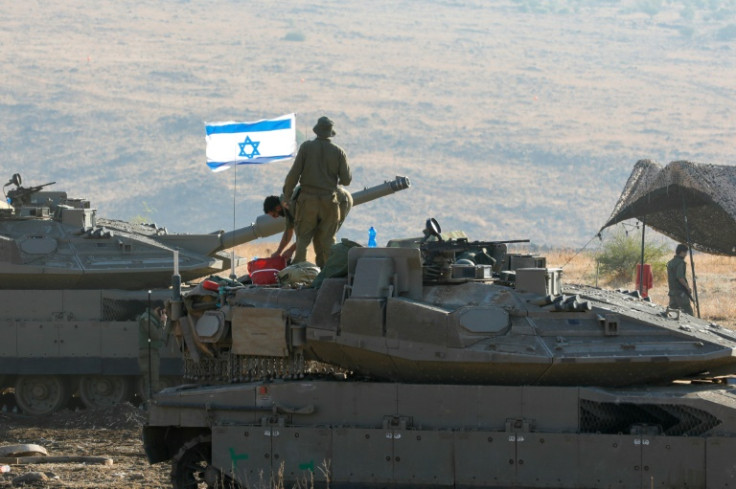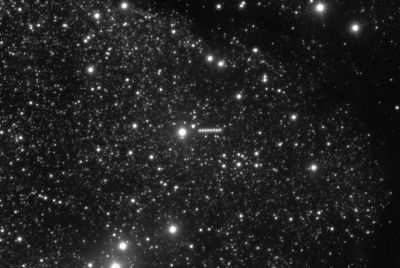IDF Strikes Syria After Syrian Army Attack
The IDF confirmed that the military launched targeted air strikes on "military infrastructure" in Syria to prevent Iranian arms shipments from reaching Hezbollah.

The Israel Defence Forces (IDF) reported this morning, Wednesday 25 October, that the military struck several targets in Syria.
The strike on Syria comes after rockets were fired from Syria towards Israeli communities in the northern region of Israel.
The IDF reported that the strikes were conducted after two rockets were launched from Syria to the north of Israel on Tuesday night, 24 October.
The Syrian airstrikes set off alarms in the Golan Heights communities of Neot Golan, Bnei Yehuda, and Givat Yoav, said the IDF.
Although the IDF said that the missiles landed in open areas and caused no injuries, a state news outlet in Syria, SANA, reported that a Syrian military source said that eight soldiers were killed in the strikes and another seven people were wounded.
In a post on X, the IDF said that its fighter jets struck "military infrastructure and mortar launchers" of the Syrian armed forces "in response to rocket launches from Syria toward Israel yesterday".
Israel's retaliatory air strikes targeted the Daraa countryside in Syria and were fired from the Golan Heights region.
The IDF noted that the assault specifically hit "military infrastructure" which belongs to the Syrian Arab Army, as well as mortar launching sites.
Golan Heights was taken by Israel, from Syria, in the 1967 Six-Day War, and is home to around 20,000 people and 30 Israeli settlements.
Reports note that since the conflict between Israel and Hamas escalated on 7 October, the IDF has hit Damascus airport twice and Aleppo's airport has been hit three times.
Both airports were put out of service by the air strikes.
The IDF have also targeted airports and seaports in areas occupied by Assad's regime in Syria.
🚨 From the attack by IDF tonight in Syria which was aimed at Iranian weapons depots pic.twitter.com/qtFJCyQ9Wc
— Mossad Commentary (@MOSSADil) October 25, 2023
Israel's attack on the transport infrastructure in Syria comes as an attempt to step up efforts to prevent arms shipments from Iran from reaching militant groups that are backed by the authorities in Tehran.
The militant groups supported by the Iranian government include Lebanon's Hezbollah and Hamas.
The rocket attack from Syria sparked fears about a new front opening up amid tensions rising between the IDF and Hezbollah on the border between Israel and Lebanon.
Since 7 October, Hezbollah, the Lebanese proscribed terrorist group, has fired dozens of anti-tank guided missiles, rockets and mortars at military positions and towns in Israel.
Several drone attacks have been intercepted as they headed towards northern Israel and reports note that Hezbollah has sent gunmen into the region, in another attempt to infiltrate the northern region of Israel.
While more than a million innocent civilians remain trapped in Gaza, to protect Israeli nationals from the relentless Hezbollah attacks, the IDF and the Defence Ministry have been evacuating 42 communities on the border and civilians in the city of Kiryat Shmona.
In recent weeks, the IDF has also reported that the military has targeted more than 30 terror cells belonging to Hezbollah in the southern region of Lebanon.
Israel has warned that Lebanon will suffer if the Hezbollah attacks intensify.
In the tit-for-tat air strike exchanges between the IDF and Hezbollah, 41 Hezbollah gunmen, six Palestinian militants and at least six Israeli soldiers have been killed.
One Israeli civilian was killed in a Hezbollah attack on northern Israel and four Lebanese civilians and a journalist were killed in a responsive IDF strike.
The continuous assault from Hezbollah is to demonstrate their standing with Hamas.
While the UN is calling for a humanitarian ceasefire, the IDF has continued to hit Gaza with a bombardment of retaliatory air strikes.
Since Hamas launched a massacre of Israeli nationals on 7 October, more than 1,400 people have been killed in Israel and more than 5,000 people have been killed in Gaza.
More than 200 Israeli civilians remain as hostages taken by Hamas and are being held captive in the Gaza Strip.
© Copyright IBTimes 2025. All rights reserved.





















